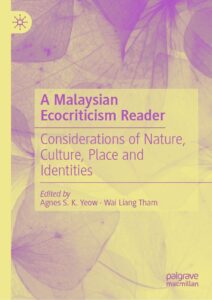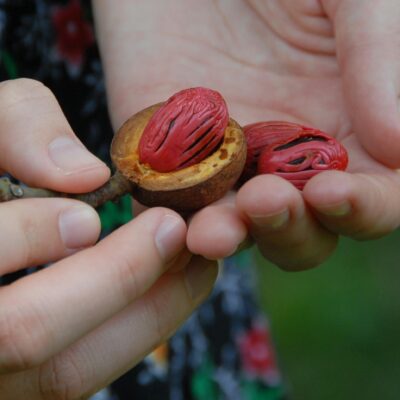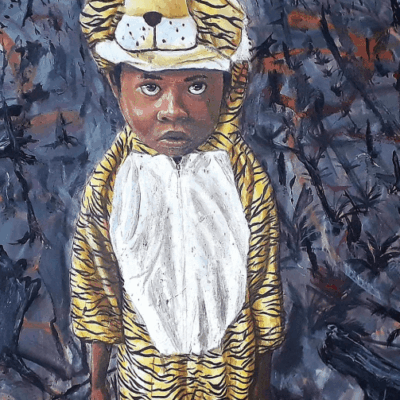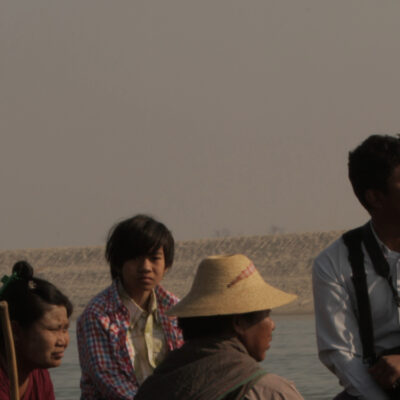
In recent years the environmental humanities—the study of the complex relationships between humans, non-human life, and the environment—have sought to provincialise paradigms of nature and ecology. A Malaysian Ecocriticism Reader (Palgrave MacMillan, 2024) enters into the conversation as an enrichment of this global discourse, marking the first anthology dedicated to Malaysian ecocriticism. Edited by Agnes S.K. Yeow and Wai Liang Tham, this interdisciplinary collection brings into discussion how nature, place, culture, and identity are entangled in the context of Malaysia.
At the heart of the Reader lies what the editors term the ‘biosemiotic’ mode, which refers to the ways living beings, environments, and systems are interconnected through dynamic, reciprocal, and interdependent relationships; and recognises nature not as a backdrop or resource, but as co-author and co-agent in the making of meaning, identity, and nationhood. Drawing from Malay concepts such as alam (the universe/nature), tanah air (homeland, literally ‘land and water’), and semangat (spirit), Yeow and Tham argue such metaphors are not merely decorative but act as ‘material-semiotic figures’ entangled in with the lives and literatures they frame.
The collection is structured in four thematic parts: ‘Cultivating Multispecies Worlds’, ‘Mediating Magical Landscapes’, ‘Encountering Other Ecologies’, and ‘Defending the Tanah Air’. These sections together chart a movement from theory to case studies, combining perspectives from literary studies, anthropology, biology, and creative writing. What is brought into view is how these perspectives resist the neat binaries of human and non-human, native and migrant, spiritual and scientific.
Several chapters stand out for their compelling articulation of the authors’ ‘biosemiotic’ mode. Thary Gazi Goh’s reading of Lat’s graphic novels, for instance, reframes the halaman (the domestic garden) as a site of ecological intimacy and intergenerational memory. The halaman emerges as both page and place, a palimpsest where plants, people, and stories grow together. Similarly, Christina Yin’s creative non-fiction on orangutan rehabilitation offers a tender account of human-animal co-dependence, challenging the boundary between care and captivity. These pieces exemplify what the editors describe as a ‘storied matter approach, where nature is always already imbued with narrative and ethics.
The Reader also confronts the ecological legacies of empire. The editors trace the transformation of Malaysia’s mangrove coasts and tropical forests into plantations, situating this within what influential scholars Donna Haraway and Anna Tsing have called the ‘Plantationocene, a proposed geological epoch which highlights colonialism, extractivism and and monocropping. The Reader does not shy away from the complexities of postcolonial identity politics either, interrogating the distinctions between ‘native’, ‘Indigenous’, and ‘migrant’ identities that are distinctive to Malaysia. A particularly provocative chapter by Lily Rose Tope explores queer ecologies in Dina Zaman’s short stories, using sexuality as a lens to reconfigure both ecological belonging and Malayness. Here, the forest becomes a generative site of transgression and transformation, serving as an ’other ecology’ that exceeds normative frameworks.
Despite the breadth of the essays, the collection is not without its limitations. The editors themselves acknowledge the book’s Peninsular Malaysia focus, with limited representation from Sabah and Sarawak. Given East Malaysia’s ecological and cultural particularities are so central to the story of Malaysia and often already sidelined, this is a missed opportunity. It is hoped that perhaps future anthologies might address this.
Moreover, the Reader’s interdisciplinary starting point is that the text is foundational to its reading of culture and visuality. In doing so, one of the biggest challenges is that it doesn’t always properly problematise our reliance on interpretation when trying to understand culture. In doing so, cultural worldviews which often resist interpretation or resist the capacity of being known are not given sufficient discussion.
Nevertheless, chapters such as Kamal Solhaimi Fadzil’s on Orang Asli land rights, or Gurmit Singh K.S.’s memoir excerpt exemplify lived experience and community epistemologies. On the whole, there is an openness and plurality in tone that resists didacticism, inviting readers to reflect rather than prescribe. It is a fine addition that converses with other recent ecocritical works with regional concerns, such as Malcom Ferdinand’s Decolonial Ecology: Thinking from the Caribbean World. There is a quiet refusal here to universalise Western modes of environmental thinking.
A Malaysian Ecocriticism Reader reminds us that the stories we tell about nature are inextricable from how we imagine the future of culture. It is an admirable attempt to articulate Malaysian ecocriticism on its own terms and place it within global discussions. It is also reaching out to scholars of Southeast Asia, literature, and environmental studies to attend to the local vocabularies and cosmologies that have long co-existed alongside dominant academic paradigms. In this way, the book does not merely define a new canon as it proposes a new sensibility attuned to multispecies solidarities and the semiotic richness of place.
Main image: A coastline of Malaysia with tropical forest, rocks on the shore and the ocean. Credit: Kishor on Unsplash. Book cover image used with permission from the publisher.




